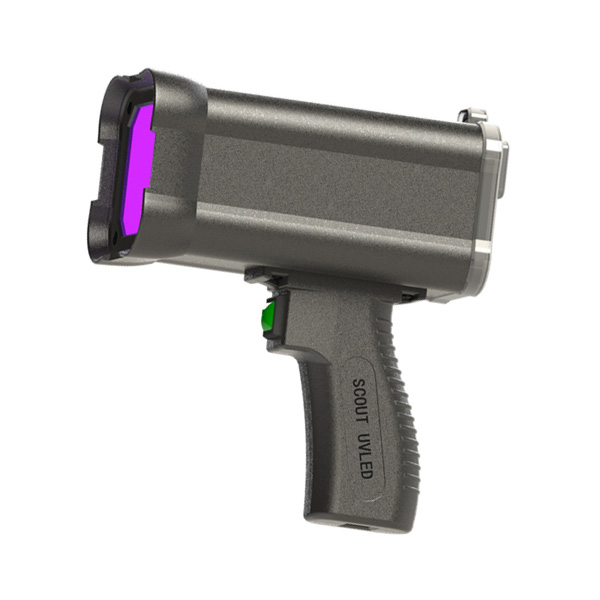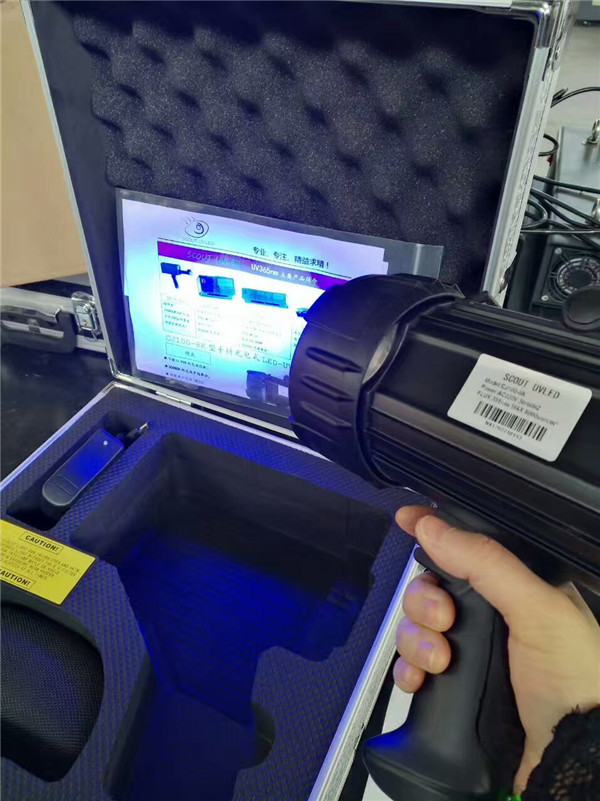For more than 50 years, mercury vapor lamps have been the default UV-A source for fluorescent inspection technology. In order to reduce mercury vapor waste including bulbs, since the 1990s, the Environmental Protection Law has been implemented, and most of the mercury lamps for general lighting have been eliminated and replaced by fluorescent tubes or LED lamps. However, the NDT industry is an exception. Due to the special requirements for high-intensity UV-A sources, the mercury lamps for inspection usage have not been limited. However, the exemption period for halogen black lamps to be used as industrial ultraviolet special light sources has expired since 2016, and the NDT industry has been forced to gradually abandon mercury vapor lamps. In the past 10 years, LED manufacturing technology has made great progress, and high-intensity LED UV-A lamps are now the best alternative.
The lighting industry has generally regarded LEDs (light-emitting diodes) as the preferred technology over incandescent and fluorescent bulbs. Due to the special lighting requirements of the NDT industry, the NDT industry is still relatively backward in adopting LED technology. In particular, fluorescent penetrant testing or fluorescent magnetic particle inspection also faces the unique challenges of UV-A light sources.
1. The LED Light Advantages
Comparing LED UV-A lamps with mercury vapor lamps that have traditionally been used in the past, LEDs have three main advantages:
- 1) First of all, LED lights are very flexible in design and application. LED lights can be configured with one LED or multiple LEDs to achieve multiple illumination configurations. Its flexible design allows for close-range illumination inspection and general use, as well as large luminaires that cover large areas. This type of lamp can be powered using 110V/220V AC power source, a battery, a rechargeable battery, or a combination of the above. The LED lamp does not generate heat when it is working, so the lamp housing can be sealed and will not be damaged even if it is working in a humid or dirty environment. Unlike mercury vapor lamps, LED lamps can achieve full brightness without preheating, and LED UV-A lamps can be used for inspection immediately after they are turned on.
- 2) The second advantage of LED UV-A lamps is Safety. Switching from mercury vapor lamps to LED lamps eliminates harmful mercury waste. Mercury vapor bulbs emit harmful UV-B and UV-C radiation, so a filter must be provided to protect the inspector. Handheld mercury vapor lamps have a power of 100W and ceiling-mounted devices have a power of 400W each. The power consumption assembly generates a large amount of heat, which causes the surface of the lamp to become hot, posing a burn hazard to the inspector. Mercury vapor lamps are made of fragile glass bulbs and filters to prevent accidental damage from impact or splashing of liquids. LED lights avoid all of the above risks and greatly increase the safety of inspectors and inspection sites.
- 3) The third advantage is energy saving and ease of maintenance. For 400W/100W heat source black light mercury vapor bulbs, they always need to be replaced in 1-3 months, but the lifespan of LED UV-A lights can be more than 30,000 hours and the power consumption of the LED light is only around 12W (for most of the handheld NDT uv led lamps in the market like below model).
2. The Main Features of NDT Technology
While flexibility is one of the main advantages of LED UV technology, it also means knowing more about the technology to find the right features for non-destructive testing. Lamps used for fluorescent penetrant testing or magnetic particle inspection need to consider a number of factors, including peak wavelength, emission spectrum, working distance, illumination pattern, power supply, and certification requirements.
3. Conclusion
LED UV-A lamps have many advantages over mercury vapor lamps. LED lights are more flexible in design and application. Once the LED lamp is energized, it can reach the full irradiation intensity, no need to preheat before use; it is safer to use, which can reduce the danger of the inspectors and eliminate harmful mercury waste. It is also energy saving and ease of maintenance.
There are many factors to consider when choosing the right LED UV-A lamp for fluorescent magnetic particle inspection. The use of LED lights must take into account factors such as the emission spectrum, the area of illumination and the power supply. For aerospace and other high-standard industries, certification requirements also need to be considered. If LED UV-A lamps are used, the integrity of the lamps should be checked regularly to ensure they are clean and in good working condition. A blank paper check helps to quickly verify the performance of the lamp.
Above all, LED UV-A lamps are representing one of the great innovations in NDT field.








